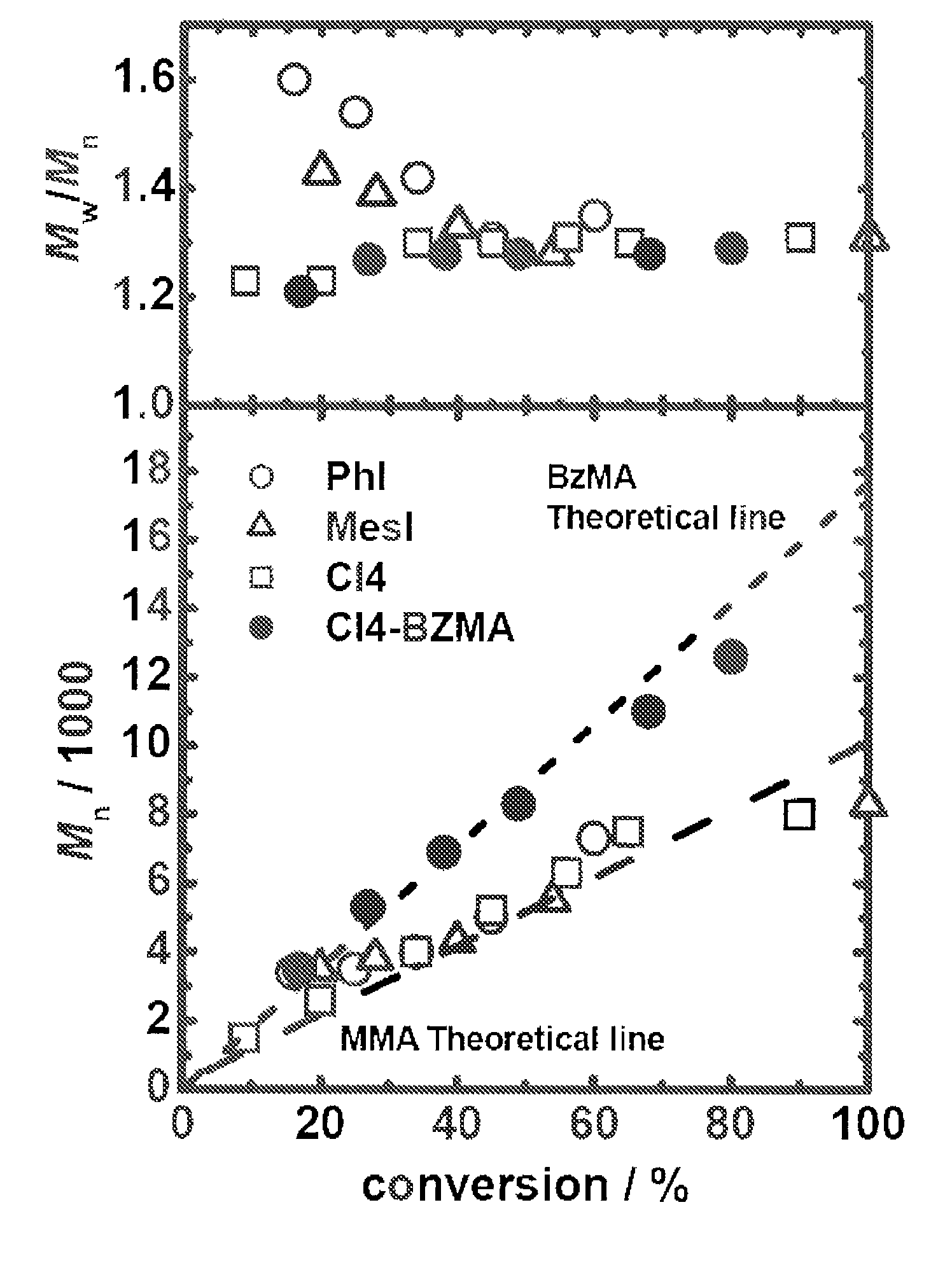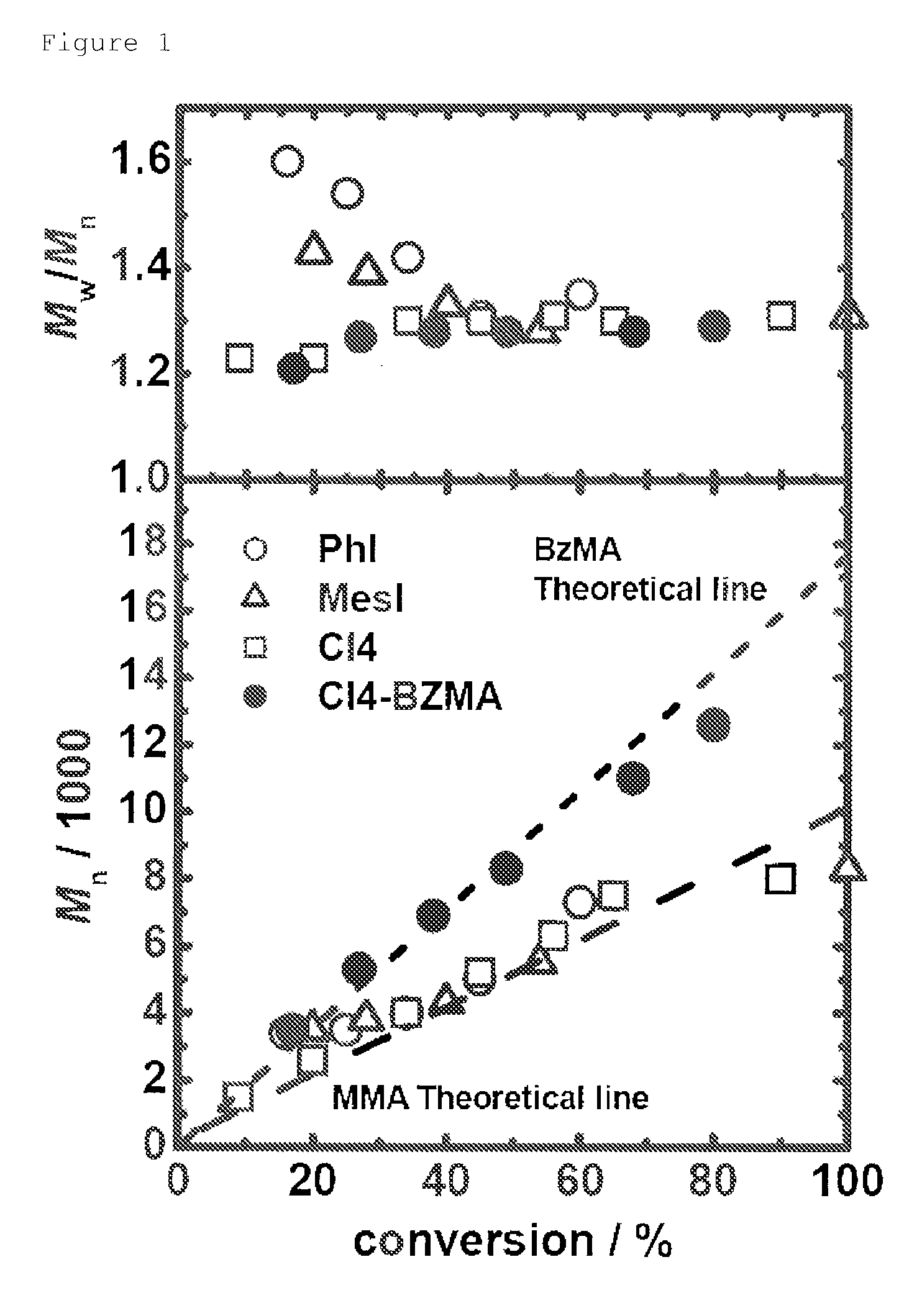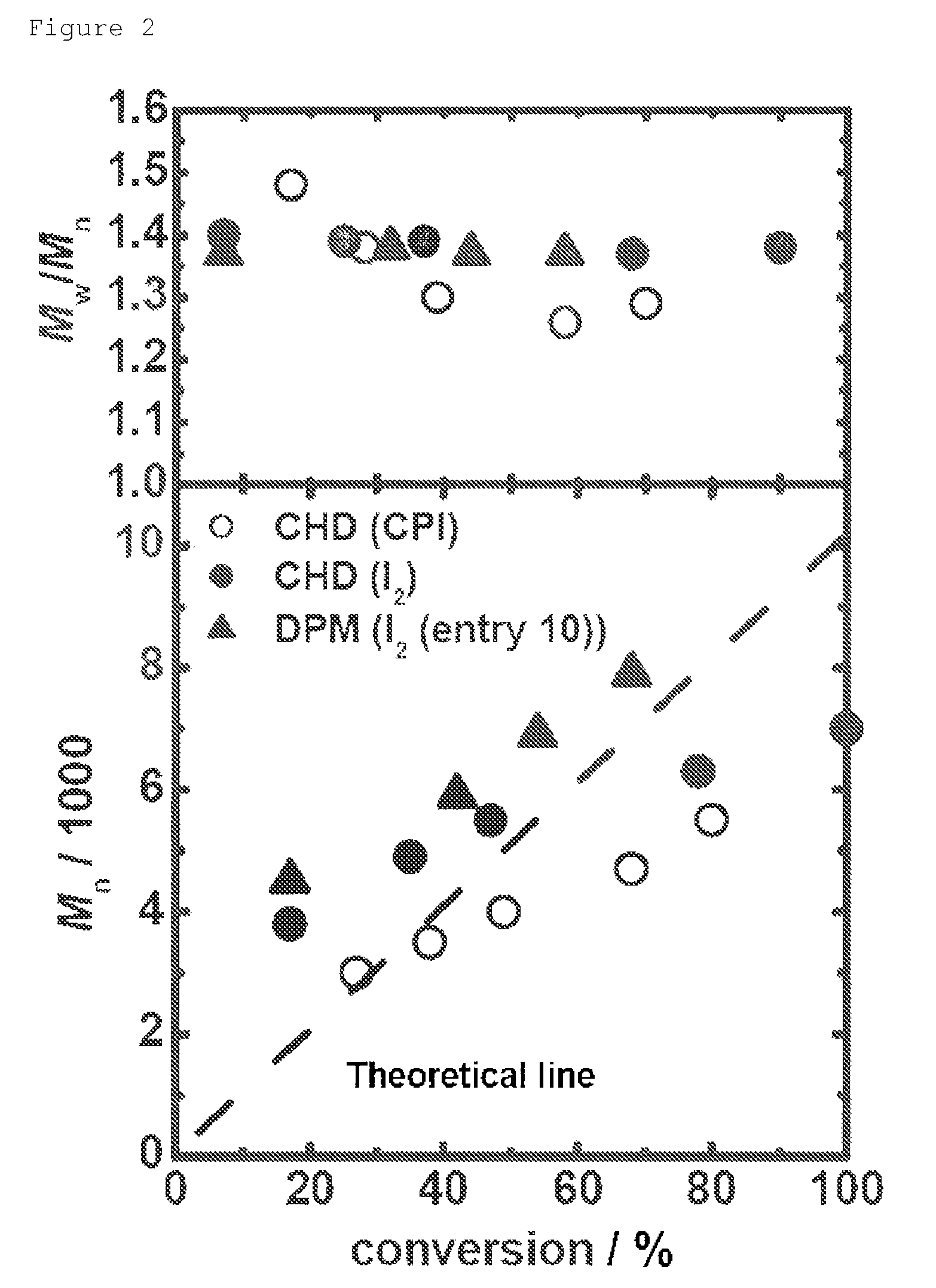Catalyst for living radical polymerization
a catalyst and radical polymerization technology, applied in the field of high-active catalysts, can solve the problems of difficult to obtain a vinyl polymer with narrow molecular weight distribution, the radical polymerization method is difficult to control the molecular weight of the obtained vinyl polymer, etc., and achieves low toxicity, high solubility, and high activity.
- Summary
- Abstract
- Description
- Claims
- Application Information
AI Technical Summary
Benefits of technology
Problems solved by technology
Method used
Image
Examples
example 1
Polymerization of Methyl Methacrylate (MMA) or Benzyl Methacrylate (BzMA) Using a Carbon-Iodide as Catalyst
[0307]80 mM of 2-cyanopropyl iodide (CP-I: the chemical structural formula is as described above) was used as an alkyl halide that is to be used as a dormant species. 1 mM of iodobenzene (PhI: the chemical structural formula is as described above) was used as a catalyst. 10 mM of 2,2′-azobis(isobutylonitrile) (AIBN) was used as a radical initiator. These materials were dissolved in 2 g of methyl methacrylate (MMA) to obtain a reaction solution having the aforementioned concentrations. The monomer concentration was about 8 M. The solubilities of these materials were satisfactory, and a homogenous solution was formed. The remaining oxygen was replaced with argon. The reaction solution was heated to 80° C. to perform the polymerization reaction.
[0308]It is noted that regarding concentrations, “mM” refers to the number of millimoles relative to 1 liter of a monomer. For example, 80...
example 2
Homopolymerization of Methyl Methacrylate (MMA) or N,N-dimethylaminoethyl Methacrylate (DMAEMA) with Hydrocarbon
Precursor-Type Catalyst
[0319]Polymerization of methyl methacrylate (MMA) or N,N-dimethylaminoethyl methacrylate (DMAEMA) was carried out similarly to Example 1 except for the changes of the reaction materials and reaction conditions, as shown in Table 2 (entries 9 to 20)
[0320]In a system similar to Example 1, a hydrocarbon compound was used as a precursor of a catalyst instead of a carbon-iodide (the aforementioned Scheme 2). In this polymerization, a radical generated by cleavage of a radical initiator, or a growing chain radical (polymer.) derived therefrom abstracts a hydrogen of a hydrocarbon to generate an activated radical R—C. (Scheme 2(a)) Based on the action of the carbon radical, the reversible activation is conducted (aforementioned Scheme 2(b)).
[0321]In this Example, as catalysts (the chemical formulas are as shown above), 1,4-cyclohexadiene (CHD), diphenylmeth...
example 3
Homopolymerization of Styrene (St) with a Precursor-Type Carbon Catalyst
[0329]In a system similar to Example 2, experiments were conducted. However, the materials and conditions were changed as shown in Table 3 below. The results are shown in Table 3 below.
[0330]
TABLE 3[R-X]0 / [In]0 / [XA]0TtconvMn,entrymonomerR-XInXA(mM)(° C.)(min)(%)MntheoPDI1StCPIBPOCHD80 / 20 / 380742600044001.48953680055001.452210010300104001.322StCPIBPBCHD80 / 40 / 10100456760058001.43610010500104001.313StCPIBPBDPM80 / 40 / 150100228440029001.44347550048001.4565800068001.264StCPIBPBThio80 / 40 / 30100226430027001.44xan343520045001.42thene562740065001.32
Monomer concentration: 8 M (bulk)
Alkyl halide to be use as a dormant species (R—I): CPI
Radical initiator (In): benzoyl peroxide (BPO), t-butyl peroxybenzoate (BPB)
Catalyst (XA): 1,4-cyclohexadiene (CHD), diphenylmethane (DPM), thioxanthene
Mn and PDI: Molecular weight and polydispersity obtained by gel permeation chromatography (GPC) with tetrahydrofuran (THF) as an...
PUM
| Property | Measurement | Unit |
|---|---|---|
| reaction temperature | aaaaa | aaaaa |
| temperature | aaaaa | aaaaa |
| temperature | aaaaa | aaaaa |
Abstract
Description
Claims
Application Information
 Login to View More
Login to View More - R&D
- Intellectual Property
- Life Sciences
- Materials
- Tech Scout
- Unparalleled Data Quality
- Higher Quality Content
- 60% Fewer Hallucinations
Browse by: Latest US Patents, China's latest patents, Technical Efficacy Thesaurus, Application Domain, Technology Topic, Popular Technical Reports.
© 2025 PatSnap. All rights reserved.Legal|Privacy policy|Modern Slavery Act Transparency Statement|Sitemap|About US| Contact US: help@patsnap.com



